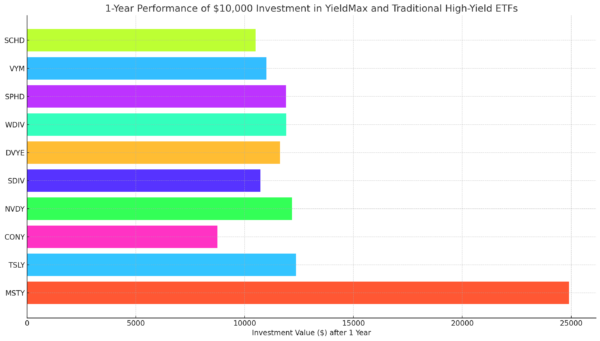Is Intel’s Dividend Safe?
Intel (Nasdaq: INTC) has been losing some market share to Advanced Micro Devices (Nasdaq: AMD). Now more investors are concerned and wondering… is Intel’s dividend safe? For the short answer, Intel still remains a cash flow machine. And the dividend seems to be safe over the next few years.
Intel’s dividend history is long, and it might make a great addition to an income portfolio. Let’s take a closer look at the business, dividend history and payout safety going forward.
Intel Business Highlights
Intel is a $210 billion business. The company is based out of Santa Clara, California, and it employs 110,800 people. Last year, Intel pulled in $72 billion in sales, and that works out to $650,000 per employee.
The company is a tech giant with a solid credit rating of A+ from the S&P. This allows Intel to issue cheap debt to build the business and pay dividends. Although, as you’ll see below, the company’s free cash flow is more than enough to cover the dividends.
In more recent news, Intel announced about a six-month delay of its 7-nanometer chip products. And the share price dropped in response. But with continued strong cash flow, management has announced a $10 billion share buyback. If management is able to deliver on the big future growth, this is a great move for investors.
Intel is transitioning to larger data-centric sales. Management is positioning the company to lead in AI, 5G and the autonomous revolution. The company acquired a leader in vision-based self-driving car technology, Mobileye, for $15.3 billion.
This is just one of many forward-looking moves that can unlock billions in new sales. And it’s moves like this that will likely allow Intel to continue its long dividend history…
Intel Dividend History
The company paid investors $0.63 per share a decade ago. Over the last 10 years, the dividend has climbed to $1.26. That’s a 100% increase, and you can see the annual changes below…

The compound annual growth is 7.2% over 10 years… but over the last year, the dividend climbed 5%. The slowdown in dividend growth isn’t a great sign, but 5% is well above inflation, and Intel still might be a good income investment. Let’s take a look at the yield…
Current Yield vs. 10-Year Average
Intel’s long history of paying dividends makes it one of the best dividend stocks around. This also makes the dividend yield a great indicator of value. A higher yield is generally better for buyers. Sustainability is also vital, and we’ll look at that soon.
The dividend yield comes in at 2.67%, and that’s below the 10-year average of 3.07%. The chart below shows the dividend yield over the last 10 years…

The lower yield shows that investors have bid up the company’s market value. They might be expecting higher growth and payouts, but more often than not, the dividend yield reverts to the mean with share price changes.
Is Intel’s Dividend Safe? Here’s the Payout Ratio…
Many investors look at the payout ratio to determine dividend safety. They look at the dividend per share divided by the net income per share. So a payout ratio of 60% would mean that for every $1 Intel earns, it pays investors $0.60.
The payout ratio is a good indicator of dividend safety… but accountants manipulate net income. They adjust for goodwill and other noncash items. So instead, a more reliable metric is free cash flow.
Here’s Intel’s dividend payout ratio based on free cash flow over the last 10 years…

The ratio has been volatile over the last 10 years, and it’s almost always below 50%. The last year shows a payout ratio of 32.9%. This gives plenty of wiggle room for Intel’s board of directors to continue raising the dividend.
Even if Intel loses some market share and sees downward cash flow pressure, the dividend is safe. And if some of the new projects really take off, we could see some big dividend increases. Overall, Intel is a pretty safe bet.
That’s why it made our list of the top 10 dividend tech stocks in 2020. Feel free to check out those other nine investment opportunities with that link. Also, you can sign up for our free Investment U e-letter below. Whether you’re new or an experienced investor, you’ll find some useful tips.





